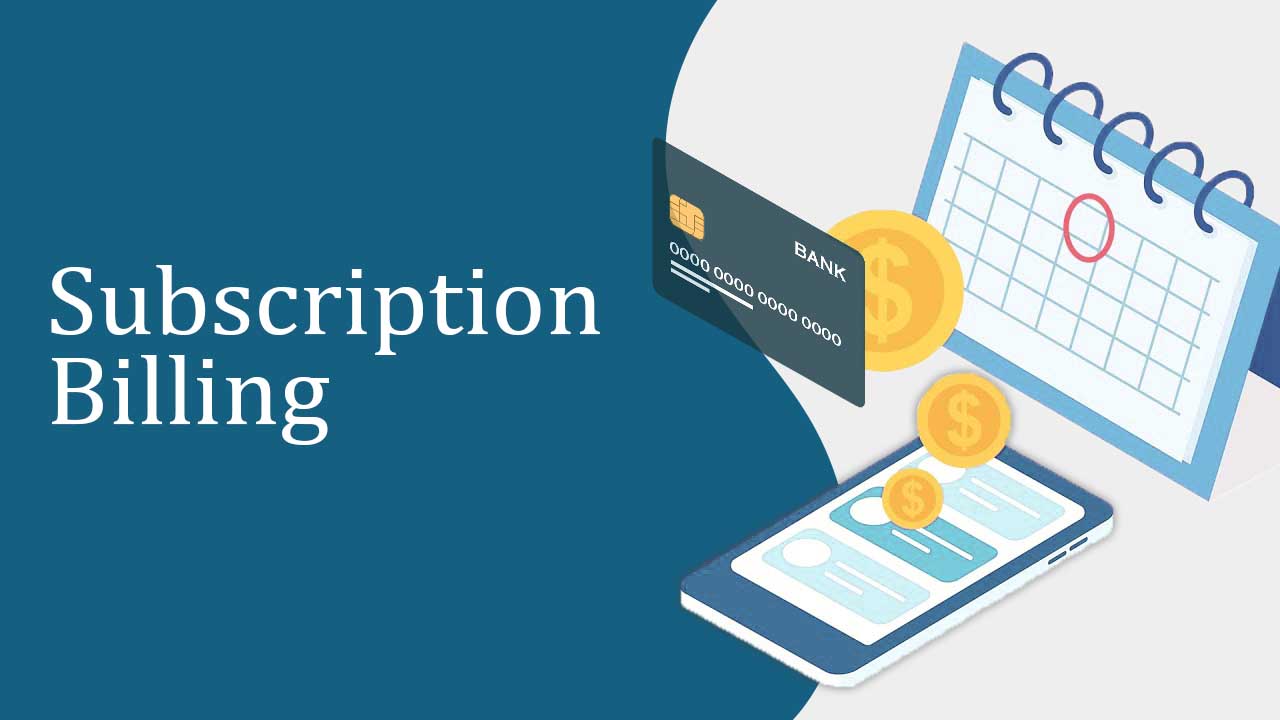Last Modified: November 17th, 2022
4 min read
Subscription billing is a financial strategy for businesses to provide goods or services on an ongoing basis. It can be used as a form of pay-per-use, where the customer pays for each usage, or it can be an alternative to traditional one-off payment systems like credit cards and PayPal.
It’s typically cheaper than these options because it allows businesses to spread their costs over time, and it’s more predictable because customers are typically billed on a regular schedule.
Subscription billing can be used for anything from physical goods like food or clothes, to digital products and services like software or streaming media. It’s a popular billing method for companies that offer ongoing support or service, like gyms, spas, and salons.
Different modes of subscription billing
There are a few different ways to set up subscription billing. The most common is to bill customers on a monthly basis, but businesses can also bill annually, quarterly, or even weekly if it makes more sense for their product or service.
Another option is to offer a free trial period, where customers can use the product or service for a set amount of time before they’re billed. This is a common strategy for businesses that offer services like software-as-a-service (SaaS), where customers need to use the product to see its value.
Some subscription billing platforms also offer usage-based billing, where customers are only charged for the amount of resources they use. This is common for businesses that offer cloud-based services, like storage or computing power.
How to set up a subscription billing service?
To set up a subscription billing service, businesses will need to choose a payment processor and a billing platform. There are many different options available, so it’s important to compare features and pricing before making a decision.
Once you’ve chosen a platform, you’ll need to set up your billing rules and integrate it with your payment processor. This can be done with a few clicks if you’re using a hosted solution, or it may require some coding if you’re using an open-source platform.
Finally, you’ll need to create a subscription plan and add it to your website. This will allow customers to sign up for your service and start using it right away.
What are the benefits of subscription billing?
There are many benefits of subscription billing, both for businesses and customers. Businesses can enjoy more predictable revenue, as customers are typically billed on a regular schedule. This can help with cash flow and forecasting.
Subscription billing can also save businesses money, as they can spread their costs over time. And, because customers are typically billed automatically, businesses can save on administrative costs.
Customers can enjoy the convenience of having their bills paid automatically, and they don’t have to worry about forgetting to make a payment. They can also take advantage of free trials and usage-based billing to save money.
What are the challenges of subscription billing?
The biggest challenge of subscription billing is customer churn, or the rate at which customers cancel their subscriptions. This can be a problem for businesses that rely on subscription revenue, as it can have a major impact on their bottom line.
To combat customer churn, businesses need to focus on creating a great product or service that customers will want to use. They should also offer competitive pricing and flexible payment options. And, they should make it easy for customers to cancel their subscriptions if they need to.
Another challenge of subscription billing is managing subscription data. This can be a problem for businesses that have a large number of customers and subscriptions. To manage this data effectively, businesses need to use a billing platform that offers reporting and analytics features.
What are the best practices for subscription billing?
There are a few best practices that businesses should follow when setting up their subscription billing.
First, businesses should make sure that their pricing is competitive. They should also offer a free trial to give customers a chance to try the product or service before they’re billed.
Second, businesses should offer flexible payment options so that customers can choose the option that best suits their needs. And, they should make it easy for customers to change their payment method if necessary.
Third, businesses should make it easy for customers to cancel their subscriptions. They should also offer a way for customers to pause their subscription if they need to take a break.
Finally, businesses should keep an eye on their customer churn rate and take steps to reduce it.
Thinking of switching to subscription billing?
Subscription billing is a convenient way for businesses and customers to pay for goods and services. There are many benefits of subscription billing, including more predictable revenue, savings for businesses, convenience for customers, and the ability to save money with free trials and usage-based billing.
There are also some challenges that businesses need to be aware of when using subscription billing, such as customer churn and managing subscription data. However, there are best practices that businesses can follow to overcome these challenges, such as offering competitive pricing, flexible payment options, and easy cancellation for customers.
With the right approach, subscription billing can be a great solution for businesses and customers alike.
Serge is a Managing Partner and the head of sales and business development.
Published on: April 18, 2022

